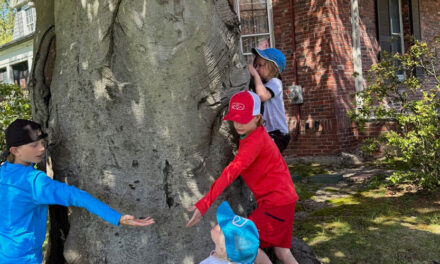Published August 28, 2020

MELROSE — The School Committee, facing some push back, is standing by its decision to have most students begin the 2020-21 academic year learning from home.
Tuesday night, about 20 residents picketed outside City Hall before the School Committee held a regularly scheduled remote meeting as they have been doing during most of the COVID-19 era. The picketers carried signs like “No Zoom. We want Classroom,” “There is no place like SCHOOL” and “Green Means Go,” a reference to a recently-released state map showing that green-shaded communities had extremely low cases of the coronavirus. Gov. Charlie Baker has said that if you live in one of these cities or towns, your kids should be heading back to some degree of in-person schooling.
Students across the Commonwealth have not been in school since the middle of March.
All districts in Massachusetts had to file return to instruction plans earlier this month. Melrose decided to submit a hybrid plan where kids go to school one week and learn from home the next, but the School Committee decided to delay implementing it for at least four weeks beginning September 16. As a result, most students will do only remote learning at first. Those who are most in need of in-person attention by teachers will be going to school on Monday, September 21.
School Committee Chair Ed O’Connell defended the decision Tuesday.
“It’s clear to me, at this point, that the real issue, from a health and safety standpoint, isn’t the buildings, it’s the people; it’s the bringing together of over 4,000 students and some 500 faculty and staff, and the resulting risk of transmitting the virus, by either airborne transmission or direct physical contact. That’s my primary concern.
“How will that gathering together of that many people play out? Will the protocols for (Personal Protective Equipment) and handwashing and social distancing be feasible and effective in the school setting? Will we be able to ensure that everyone involved — again, some 4,500 people on a daily basis, at one point or another, depending upon the learning model in use — will these active participants in our public education ‘ecosystem’ do what they are supposed to do? Not only while they are in school but, also, when they are not in school, in terms of their own personal health and safety protocols, such that we can have a reasonable measure of certainty that we can control the spread of infection when we bring them all together in our schools, and when they go home again to their family and friends.
“While we can control the physical condition of the buildings and ensure the availability of PPE and cleaning supplies, we can’t control people’s personal behavior, particularly outside of school, and therein lies the significant risk. If this experiment doesn’t work, our return to school has the potential to be a rolling super-spreader event.
“Because we have delayed our return to in-person instruction for most students for one month, we will gain the benefit of 30 additional days of seeing where the science goes, seeing how return to instruction plays out, health- and safety-wise, in other school districts that are returning to in-person instruction, en masse, from the get-go, and learning how to most effectively implement and sustain our own health and safety protocols in the Melrose schools, with the smaller and more manageable cohorts of students that we are bringing back for in-person instruction at the start of the school year. Given all of the foregoing, and all of the unknowns at present, a slow and steady approach to in-person learning seems eminently prudent and wise. I stand by our decision,” O’Connell concluded.




